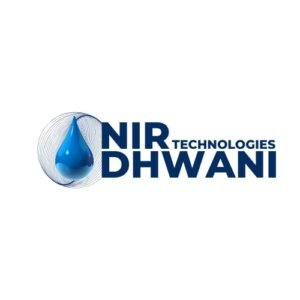COP26 and the Brahmaputra
A New Perspective Based on the Underwater Domain
Awareness (UDA) Framework – 04/06

About Event
The river Brahmaputra has played a critical role in shaping the culture, heritage and
economy of Assam. There is potential for more and it is essential that we build
capabilities and capacities for a safe, secure and sustainable growth of the region with
optimum utilization of the resources in the river.
- The ‘safe’ addresses the disaster management efforts originating from the
river – it could mean prevention and post event rehabilitation.
- The ‘secure’ address the security concerns that may originate from the river
or even endanger assets in the river. The volatile security situation in the region
does demand fresh initiatives that are able to address the concerns.
- The ‘sustainable growth’ pertains to economic growth with minimal
degradation to the river flora and fauna.
The river ecosystem particularly in the tropical regions represents significant bio-
diversity with rich source of food and other resources. The sustainable growth model
will require substantial efforts in ensuring minimal degradation of the river ecosystem.
The river species including the river dolphins use sound or acoustic signals for multiple
biologically critical functions like communication, navigation, foraging, breeding, etc.
Thus, the acoustic habitat plays a critical role in their wellbeing and population
abundance. There are innumerable dimensions of human interaction with these
freshwater bodies. The growing human interventions can limit our usage of this critical
resource and make us extremely vulnerable. The usage apart from domestic
consumption can range from navigable waters for river transport, hydropower
generation, exploitation of the living & non-living resources, climate control, wellbeing
of the local flora & fauna, disaster management and more. The river provides a vital
source of livelihood and economic prosperity to the region and also poses a great
challenge to human life, flora & fauna, due to floods and erosion disasters. At present,
the consumptive use of the river waters is at a minimum stage. However, the annual
yield of the basin forms almost 30% of the annual water resources of the country.
Thereby the basin has a great importance in supporting the water & energy security
of the country.
The COP26 dialogues have brought out the critical role of the renewable energy
sources in mitigating the climate change by substitution of fossil fuels for energy
generation. Brahmaputra basin is the single greatest source of renewable energy to
the extent of 40,000 MW and the same forms a very vital part of INDC goals committed
by the nation to the world. Impacts on these resources also needs to be carefully
evaluated and provided for. Moreover, Bangladesh is also critically short of renewable
energy sources and will have to be supported by India for their wellbeing. Brahmaputra
developments are important in this regard also. The Underwater Domain Awareness
(UDA) is extremely critical for effective governance at all levels. There are multiple mega initiatives from the Government of India (GoI) today to enhance our growth and
prosperity, however the sustainability remains a concern. A high-technology
infrastructure needs to be put in place that can monitor the entire situation in real-time
and provide the decision makers actionable inputs on a tactical and strategic level.
Right from the policy & technology interventions as well as capacity & capability
building to manage such a high-technology systems will require substantial
understanding and strategic vision. Organizational structure and interaction among the
government and private players need to be planned to facilitate effective governance
mechanism. Pooling of resources and synergizing of efforts across stakeholders, with
high deployment of Science & Technology (S&T) tools, is the key to success. The
COP26 summit has once again drawn attention of the entire global community to
sustainable growth models and the climate change concerns. The Brahmaputra with
its unique characteristics is a good case study to build on such sustainable
development models.
The Maritime Research Center (MRC), Pune is a not-for-profit, Section 8 company registered with the Registrar of Companies (RoC), as Foundation for Underwater Domain Awareness.
Contact Information
Address: Maritime Research Center, Koregaon Bhima, Pune, Maharashtra – 412216
Email: director@maritimeresearchcenter.com
Social Connect
- Youtube
Map
UDA*
The conventional approach of each of the stakeholders pursuing their own UDA* efforts has serious limitations given the highly resource intensive field experimental research initiative required for a long period. Click here for more


